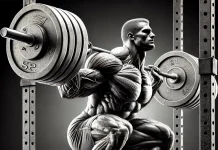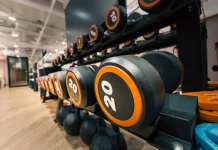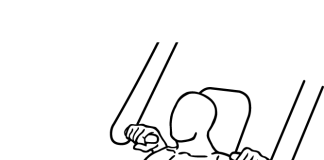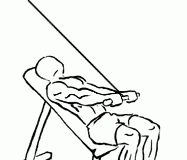Last Updated on September 30, 2014
The Hack Squat Machine offers a fantastic alternative to the traditional squat, providing support and stability, making it a popular choice among beginners and seasoned athletes alike. It targets the lower body, focusing on the quadriceps, hamstrings, and glutes, while also engaging the core for balance and stability. In this guide, we’ll explore the benefits, proper technique, variations, common mistakes, and tips for maximizing your workout using the Hack Squat Machine.
Why Choose the Hack Squat Machine?
Unlike free-weight squats, the Hack Squat Machine provides a controlled environment that reduces the risk of injury. It’s especially suitable for individuals who may have difficulty with balance or those who are new to squatting movements. By offering support through padded shoulder rests and a stable foot platform, this machine helps users focus on engaging their muscles without worrying about stabilizing a barbell.
Benefits of the Hack Squat Machine:
- Targeted Muscle Activation: The Hack Squat Machine isolates and activates the quadriceps effectively, making it an excellent tool for building leg strength and mass.
- Reduced Stress on the Lower Back: Traditional squats can put pressure on the lower back if not performed with perfect form. The Hack Squat Machine eliminates the need for balance, minimizing stress on the back and helping users maintain a safe posture.
- Ideal for Beginners: For those who find barbell squats intimidating or challenging, the Hack Squat Machine offers a safer and more accessible alternative, guiding the movement and reducing the learning curve.
- Enhanced Muscle Control: The machine allows for slower, more controlled repetitions, giving users the chance to focus on muscle contraction and form, leading to better muscle development.
Muscles Worked During the Hack Squat
The primary muscle group targeted by the Hack Squat Machine is the quadriceps. However, the exercise also engages the following muscles:
- Glutes: Lowering yourself into the squat position activates the gluteus maximus, helping shape and strengthen the muscles.
- Hamstrings: While not the primary focus, the hamstrings assist during the movement, particularly when pushing back to the starting position.
- Calves: The calf muscles help stabilize the body during the exercise, providing additional support as you squat.
- Core: Drawing the abs in and maintaining core tension helps stabilize the torso, protecting the lower back and engaging the core muscles.
Step-by-Step Guide: Performing the Hack Squat Machine Correctly
Proper form is crucial when using the Hack Squat Machine to ensure you are activating the right muscles and avoiding injury. Follow these steps to execute the exercise with precision:
Setup:
- Adjust the Hack Squat Machine to fit your height, ensuring that the shoulder pads rest comfortably on your shoulders when standing upright.
- Lie face-up on the machine, placing your back and shoulders firmly against the padding for support.
Positioning Your Feet:
- Place your feet facing forward, slightly less than shoulder-width apart. Point your toes slightly outward to allow for a natural range of motion and reduce stress on the knees.
- Your feet should be positioned higher on the platform if you want to engage your hamstrings and glutes more or lower if you’re focusing primarily on the quadriceps.
Hand Placement:
- Grab the hand grips located on either side of the shoulder pads to maintain stability and support throughout the exercise.
- Ensure your grip is firm but relaxed, avoiding unnecessary tension in your upper body.
Starting the Movement:
- Release the safety levers carefully to unlock the weight carriage. Keep your core tight by drawing your abs in, and extend your legs fully to reach an upright standing position. This is your starting point.
Performing the Squat:
- Slowly lower your body by bending at the knees. Imagine you are sitting back into a chair—this movement should feel controlled and steady.
- Continue lowering until your thighs are parallel to the platform or slightly below, depending on your mobility and comfort level. Keep your back and shoulders pressed against the pads to prevent leaning forward.
Returning to the Start Position:
- Push through your heels as you straighten your legs to return to the starting position. Avoid locking your knees at the top to maintain tension in the muscles.
- Repeat the movement for the desired number of repetitions, ensuring consistency in form and breathing.
Common Mistakes to Avoid
While the Hack Squat Machine is beginner-friendly, improper technique can still lead to ineffective workouts or potential injury. Here are some common mistakes to watch out for:
Improper Foot Placement:
- Placing your feet too low on the platform can put unnecessary stress on the knees, while placing them too high can shift focus away from the quadriceps. Experiment with different positions to find the right spot where you feel the most activation in your target muscles.
Leaning Forward:
- It’s essential to keep your back and shoulders pressed firmly against the pad. Leaning forward can strain the lower back and compromise the effectiveness of the exercise.
Locking Out the Knees:
- Avoid locking your knees at the top of the movement, as this can place excessive pressure on the knee joints. Maintain a slight bend to keep the tension on your muscles and protect your joints.
Rushing Through the Reps:
- Slow, controlled movements are key to maximizing muscle engagement and growth. Avoid using momentum; instead, focus on muscle contraction during each phase of the movement.
Tips for Optimizing Your Hack Squat Routine
- Vary Your Foot Placement: Adjust your foot position to target different muscle groups. A narrow stance focuses more on the quads, while a wider stance activates the inner thighs and glutes.
- Progressive Overload: Increase the weight gradually as you become comfortable with the exercise. Progressive overload is crucial for muscle growth and strength gains.
- Superset with Other Exercises: For an intense lower-body workout, pair Hack Squats with exercises like leg presses or lunges. This combination will maximize the activation of your lower body muscles.
- Warm Up Beforehand: Ensure you warm up your lower body muscles with dynamic stretches or light cardio to prevent injury and improve flexibility.
Hack Squat Variations
Once you’ve mastered the standard Hack Squat, consider incorporating variations to challenge your muscles in new ways:
Single-Leg Hack Squat:
- Performing the Hack Squat one leg at a time isolates each leg, improving muscle balance and coordination. This variation also intensifies the workout by placing more load on one leg, engaging stabilizing muscles more effectively.
Calf Raise Finish:
- At the end of your Hack Squat set, perform calf raises by extending your feet and lifting your heels off the platform. This variation targets the calves, adding extra volume to your lower leg muscles.
Reverse Hack Squat:
- Facing the machine, place your chest against the pad and perform the movement backward. This variation emphasizes the hamstrings and glutes more than the standard Hack Squat.
Hack Squat vs. Traditional Squat: Which Is Better?
While both the Hack Squat and traditional squat are effective lower body exercises, they serve different purposes:
- Hack Squat: Ideal for those who prefer a controlled, stable environment, making it excellent for beginners and those focusing on isolating their quads without the pressure of balancing a barbell.
- Traditional Squat: Engages more stabilizing muscles and requires greater balance and core activation, offering a more comprehensive full-body workout. However, it may be challenging for those with mobility or balance issues.
The choice between these two ultimately depends on your fitness goals and level of experience. Incorporating both into your routine can provide a balanced approach to leg development.
Conclusion: Adding the Hack Squat to Your Workout Routine
The Hack Squat Machine is an excellent tool for building lower body strength, especially for those looking to safely develop their quadriceps, hamstrings, and glutes. Whether you’re new to weightlifting or an experienced lifter looking for a controlled alternative to traditional squats, the Hack Squat Machine provides a stable and effective workout.
Remember, consistency, proper form, and progression are key to seeing results. So, adjust your settings, keep your form in check, and get ready to see some gains with the Hack Squat Machine!






